Among the pleasures of traveling in an RV, feeling everything shake and rattle when driving is definitely not one of them. Not only is it uncomfortable, but it can also cause damage to the RV’s components and contents. Unfortunately, RV shaking is a common problem that many RV owners experience, and there are several reasons why it may be happening. In this blog post, we will take a closer look at some of the common causes of RV shaking and provide some solutions to help you minimize or eliminate it altogether.
Table of Contents
Shaking RV: Why It Is a Problem
If you have ever owned or rented an RV, you are probably familiar with the shaking and rattling that can occur while driving. While some degree of movement is to be expected, excessive and prolonged shaking can cause serious damage to your RV. Let’s explore the various reasons why shaking RV can be a problem and discuss some solutions to prevent it.
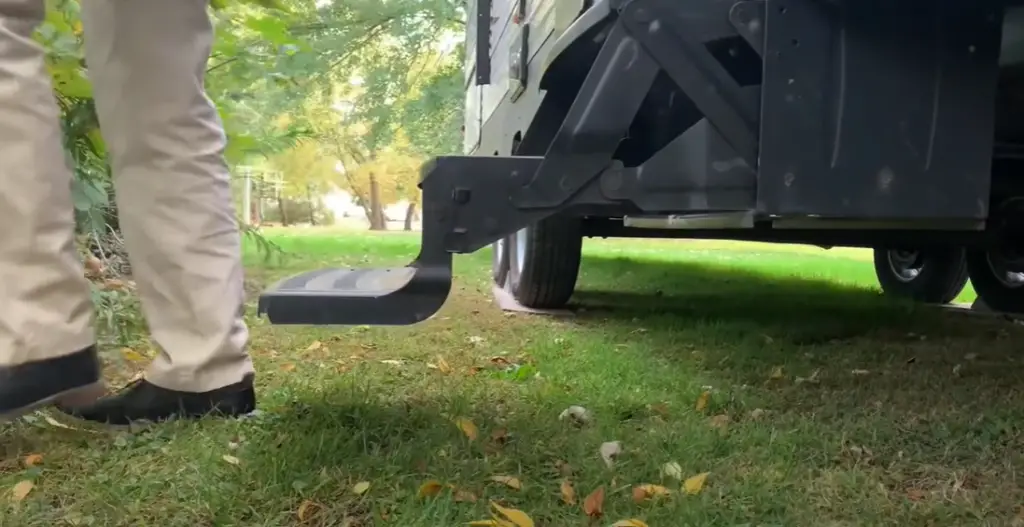
Poor Road Conditions
One of the most common reasons why an RV may shake while driving is poor road conditions. Uneven or bumpy roads can cause the RV to bounce up and down, causing a significant amount of sway and movement. This can cause objects inside the RV to shift and break, and also lead to wear and tear on the vehicle’s suspension and tires. To minimize this problem, try to avoid driving on rough roads and plan your route accordingly. If you must drive on uneven roads, reduce your speed and be extra cautious.
Improper Loading
Another common cause of RV shaking is improper loading. If items inside the RV are not secured properly, they can shift during transit and cause the RV to become unbalanced. This can lead to swaying and wobbling, which is not only uncomfortable but also dangerous. To prevent this, make sure that everything inside the RV is secured and distributed evenly. Avoid overloading one side of the RV to keep it balanced.
Imbalanced Tires
Imbalanced tires are another common cause of RV shaking. If the tires are not balanced correctly, they can cause the RV to vibrate and shake while driving. This can be particularly dangerous when driving at high speeds, as it can affect the handling of the vehicle. To prevent this problem, have your RV’s tires checked and balanced regularly.
Worn out Suspension
The suspension system of an RV is responsible for absorbing shocks and vibrations while driving. However, if it becomes worn out or damaged, it will not be able to perform its function effectively. This can cause the RV to shake and rattle excessively while driving. To prevent this problem, have your suspension system checked and serviced regularly. Replace any worn out shocks or struts as soon as possible. [2]
Speed and Wind Resistance
The speed of your RV and wind resistance can both contribute to RV shake. The faster you drive, the more wind resistance you will encounter. This can cause the RV to sway and move around on the road. Additionally, crosswinds can also cause the RV to wobble, making it difficult to handle. To prevent this, reduce your speed when driving in windy conditions and adjust your driving accordingly.
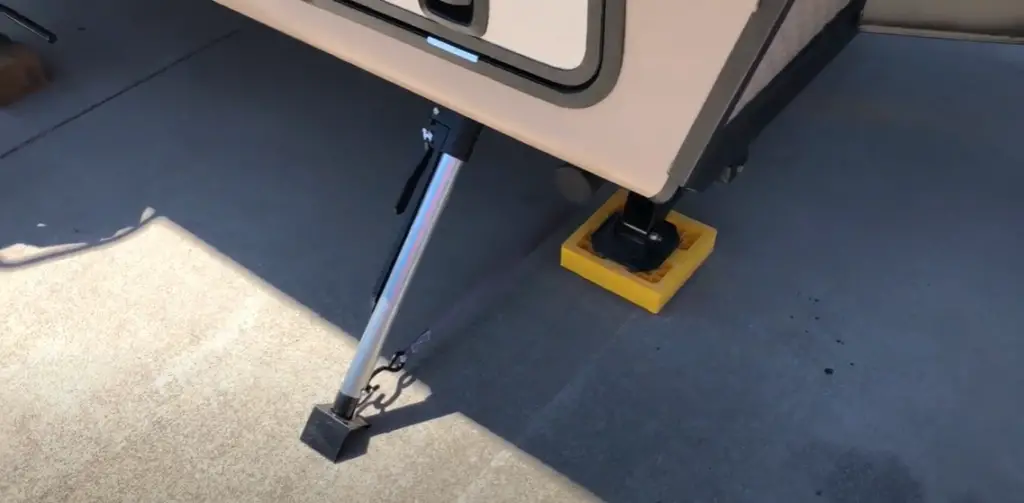
TOP Reasons of RV Shaking
If you have ever traveled in an RV, you know how enjoyable it can be to see the world with the comforts of home. But at times, you may experience RV shaking and bouncing which can be quite unsettling and uncomfortable to live with. Not only can this motion affect your travel experience, but it can also harm your RV. Therefore, it is important to find the root cause of shaking and bouncing in your RV. Here we will discuss the top reasons for RV shaking and how to counter them.
- Uneven Weight Distribution
One of the most common reasons for RV shaking is an uneven weight distribution. Make sure you distribute the weight of your belongings evenly across your RV. Keep the heavy items low and close to the center of the RV. This will help stabilize your RV and keep it from swaying.
- Tires
Another major reason for RV shaking is improper tire pressure or wear and tear in tires. Check the tire pressure regularly or before every trip and replace your tires, if necessary. Make sure the tires are evenly inflated and the same size.
- Wind and Weather
Weather fluctuations and especially wind can cause an RV to shake and bounce. If you’re traveling through an area prone to high winds, it’s a good idea to reduce your speed or avoid the area altogether. If you do need to proceed, use trailer hitches and sway controls to improve the stability of your RV.
- Suspension
The suspension system of the RV is also a possible culprit of RV shaking. RVers typically pack a lot of gear when traveling, which can lead to strain on the vehicle’s suspension. The good news is that RV suspension systems can be upgraded to improve performance. Some options include air suspension, shock absorbers, and anti-sway bars.
- Road Conditions
Another significant factor that affects RV shaking is the quality of the road. Driving on rough, uneven, or potholed roads can cause RVs to bounce, vibrate, and shake. The best way to counter this issue is to pay attention to the road, reduce speed, and drive more carefully. Consider seeking alternate routes, especially if you are traveling during road maintenance or repairs.
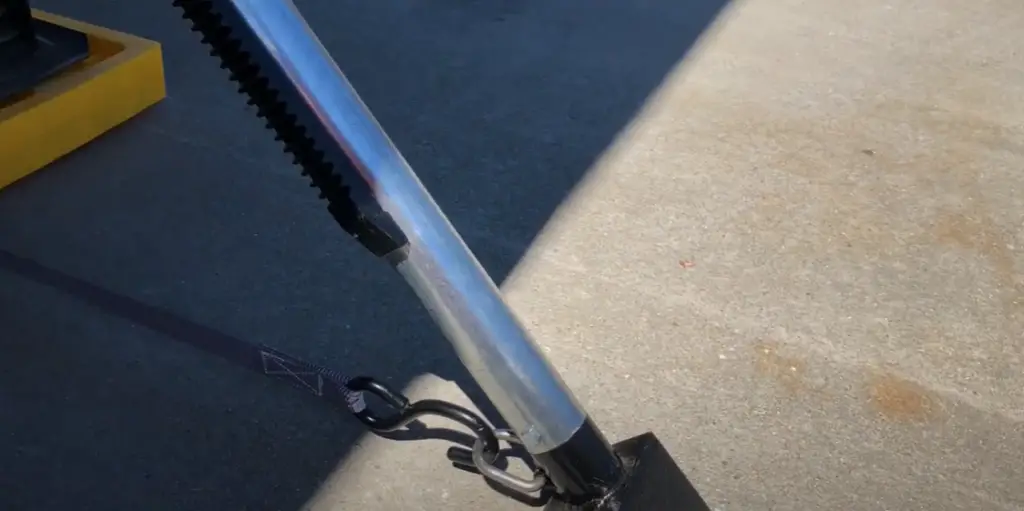
The Risks Of Driving an RV When It Is Shaking A Lot
Traveling on the open road by RV can be a liberating and exciting experience, but it does come with some risks. The more time you spend on the road, the more you will realize that unexpected events can and do happen.
One of the most common issues that RV owners face is driving a shaking RV. This can be caused by a variety of factors such as uneven terrain, high winds, or mechanical issues. Let’s check the potential risks of driving an RV when it is shaking a lot and what you can do to mitigate those risks.
Increased Wear and Tear: Shaking can put a lot of extra stress on your RV’s mechanical systems, leading to increased wear and tear. This can cause damage to core components such as the engine and suspension, which can be costly to repair or replace.
Damage to Your Belongings: If you have any loose items in your RV, the shaking can cause them to become damaged or even fly around inside the vehicle. This can be dangerous for you and your passengers and also result in costly repairs.
Potential for Tire Blowouts: When an RV shakes excessively, it puts added stress on the tires. This can lead to a blowout, which can cause you to lose control of the vehicle. A blown-out tire at high speeds can be incredibly dangerous, so it’s essential to keep your tires in good condition and avoid driving an RV that’s shaking too much.
Driver Fatigue: Driving an RV that shakes a lot can also lead to driver fatigue. The constant movement of the vehicle can be physically and mentally exhausting, leading to decreased focus and reaction time. Driving for extended periods under these conditions can increase your risk of an accident.
Driving an RV should be an enjoyable experience that brings you closer to nature and new experiences. However, it is important to recognize the risks and take steps to prevent accidents and damage to your vehicle. If your RV is shaking a lot, it is crucial to take the time to assess the cause and address the issue before hitting the road. Remember, keeping your RV in good condition and following safe driving practices can help you avoid unnecessary risks and make your travels safer and more enjoyable.
The Most Widespread Solutions
Are you tired of your RV shaking when you walk around inside? This is a common problem that many RV owners face. Luckily, there are several solutions that can help reduce or eliminate the shaking. In this blog post, we will discuss the most widespread solutions to shaking RVs. From stabilizing jacks to weight distribution hitches, we have got you covered.
- Stabilizing Jacks
One of the simplest solutions to shaking RVs is stabilizing jacks. These jacks are inserted under the four corners of your RV to prevent it from rocking back and forth. They work by leveling the RV and distributing the weight evenly on the tires. Stabilizing jacks come in different sizes and shapes, including scissor jacks, hydraulic jacks, and electric jacks. They are easy to install and can be used in combination with other stabilizing methods. [1]
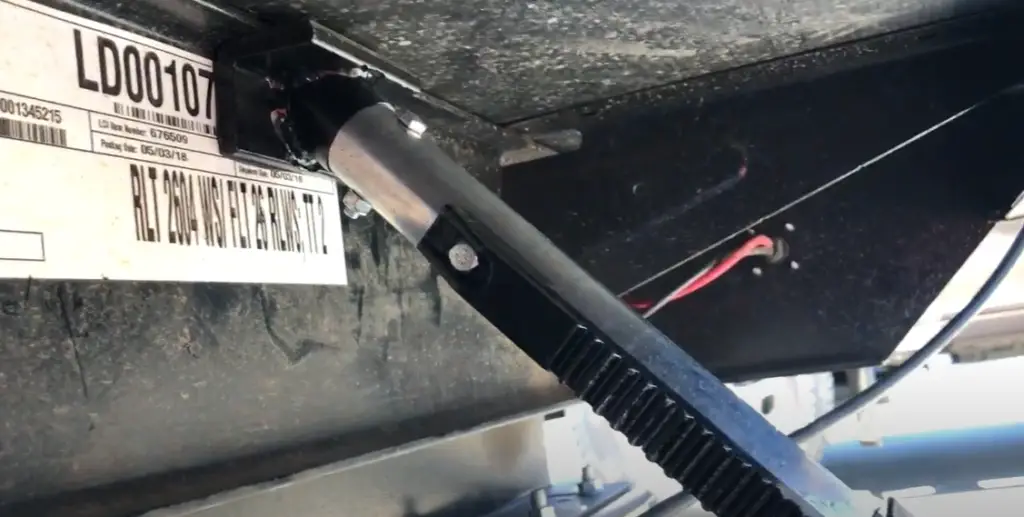
- Weight Distribution Hitches
Another effective way of reducing RV shaking is by using weight distribution hitches. These hitches work by distributing the weight of the trailer evenly on the tow vehicle’s axles, reducing the amount of weight on the trailer’s rear. When the weight is more evenly distributed, there is less swaying and bouncing, resulting in a smoother ride. Weight distribution hitches can be adjusted to match the RV’s size and weight and are easy to install.
- Chocks
Chocks are wedge-shaped blocks used to prevent your RV from rolling or moving. They are essential when parking on uneven ground or inclines as they help to keep the RV in place. Additionally, chocks can also reduce the amount of shaking by reducing movement in either direction. If you choose to use chocks, it is recommended to place them between the wheels and use them on both sides of the RV. [1]
- Anti-Sway Bars
Anti-sway bars are an excellent solution for RV owners who experience excessive swaying when driving. They work by attaching the trailer to the tow vehicle’s frame, reducing the amount of sway that occurs while driving. This results in a safer, more stable RV and a smoother ride overall. There are different types of anti-sway bars available, including friction sway control, cam sway control, and dual cam sway control.
- Leveling Systems
A leveling system is another effective way to reduce RV shaking caused by uneven terrain. These systems work to level the RV by lifting the low side and lowering the high side. They ensure that the RV is stable and even, preventing it from moving around while you are inside. Leveling systems come in both manual and automatic options and can be installed on most RVs.
Shaking RVs when walking can be a frustrating problem for many RV owners. Fortunately, there are several solutions available to help reduce or eliminate the shaking. From stabilizing jacks to weight distribution hitches, chocks, anti-sway bars, and leveling systems, there are many options to choose from. By implementing one or more of these methods, you can enjoy a more stable and comfortable RV experience.
Prevention Of RV Shaking
One of the biggest challenges of owning an RV is preventing the shaking and vibrations that can happen when parked. When you’re spending time inside your home on wheels, the last thing you want is to feel like you’re on a boat in choppy waters! Fortunately, there are several tips and tricks you can use to minimize or eliminate RV shaking.Use Stabilizing Jacks
One of the easiest and most effective ways to prevent RV shaking is to use stabilizing jacks. These are devices that attach to the underside of your RV and provide extra support to keep it stable when parked. There are several types of stabilizing jacks available, including scissor jacks, electric jacks, and hydraulic jacks. Consider what type of RV you have and how often you’ll be using the stabilizing jacks before making a purchase.
Reduce Movement Inside Your RV
While stabilizing jacks, wheel chocks, and leveling blocks can all help prevent external RV shaking, it’s also important to consider ways to reduce movement inside your RV. Simple measures like closing cabinet doors, securing loose items, and putting down non-slip mats can all help prevent objects from moving around and creating shaking. Additionally, you could consider investing in special equipment like anti-vibration pads for your appliances and furniture.
Consider Other Factors
Finally, it’s important to consider other factors that could be contributing to your RV shaking. For example, high winds, heavy rain, and nearby traffic can all cause your RV to shake. In some cases, it may be worth relocating your RV or postponing your travel plans until conditions improve. Additionally, keep in mind that some RVs simply shake more than others due to variations in design and construction.
Preventing RV shaking is an important aspect of RVing, and there are several methods you can use to keep your RV steady and stable. From using stabilizing jacks and wheel chocks to leveling your RV and reducing movement inside, there are many steps you can take to minimize shaking. By being proactive and addressing shaking early on, you can enjoy a smooth, stable, and safe RVing experience. Happy travels!
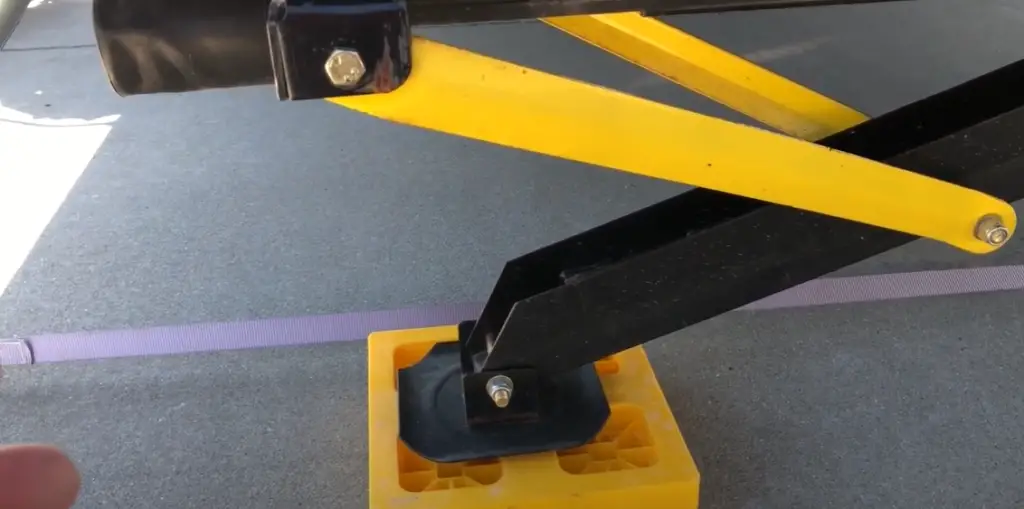
FAQ
Why does my RV Shake so much when parked?
The most common reasons why your RV shakes a lot when parked are the following:
- Uneven or unstable terrain. If your RV is parked on an unlevel or unstable surface, the weight distribution may change and cause shaking or wobbling.
- Improper tire pressure. Low or uneven tire pressure can lead to an imbalanced RV, causing it to shake when parked.
- Torsion Axle Issues. Trailer axles that have been shifted due to uneven loads or travel over rough terrain or potholes.
Why does my camper wiggle?
Like an RV, the camper can also wiggle because of the following reasons:
- Uneven weight distribution. If the weight is unevenly distributed in the camper, it can cause instability and shaking.
- Loose bolts and nuts. If bolts and nuts that secure the camper to the truck chassis are loose or missing, it can cause the camper to shake.
- Suspension problems. If the camper’s suspension system is worn out or damaged, it can cause wobbling and shaking.
How can I make my RV more stable?
There are several steps you can take to make your RV more stable while parked:
- Leveling: Ensure that your RV is level by using leveling blocks underneath the wheels.
- Stabilizers: Install stabilizers or scissor jacks on the corners of your RV to prevent shaking or wobbling.
- Chock your wheels, this prevents the wheels from moving
- Use a wheel balancer to reduce wheel vibration when driving
Useful Video: Camper Shakes When Walking Fix
Conclusions
In conclusion, RV shaking is an annoying problem that can be avoided. Regular maintenance of your RV’s tires, suspension, and weight distribution is crucial to ensure a smooth and enjoyable ride. Additionally, keeping an eye out for road conditions and planning your routes more strategically can also help reduce RV shaking. With these tips in mind, you can enjoy a more comfortable and safe travel experience in your RV.
References:
- https://rvgoer.com/travel-trailer-shakes/
- https://www.reliablerv.com/blog-article/why-is-my-rv-shaking#:~:text=Over%20time%2C%20the%20shaking%20or,the%20structure%20of%20your%20RV.

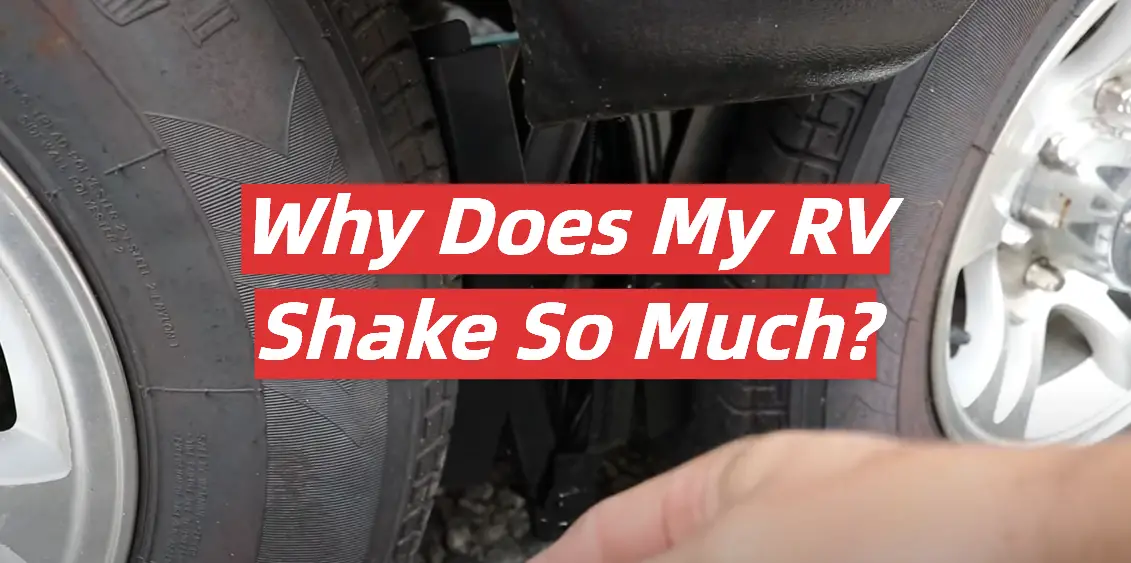

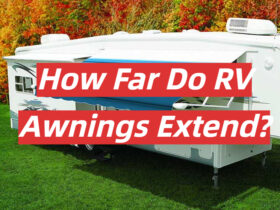

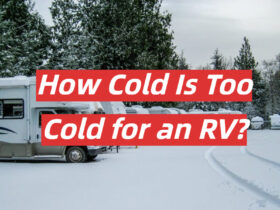
Leave a Reply